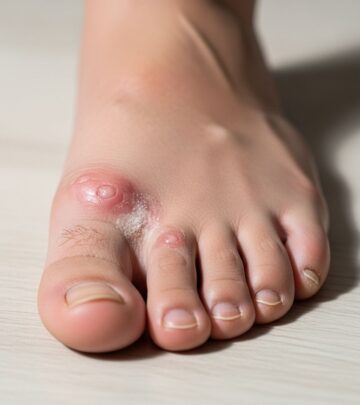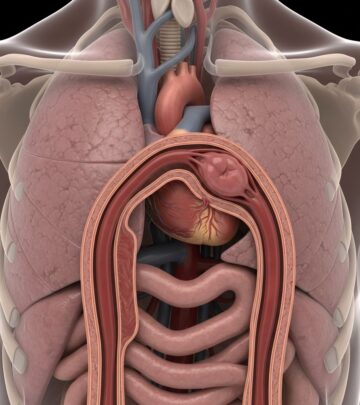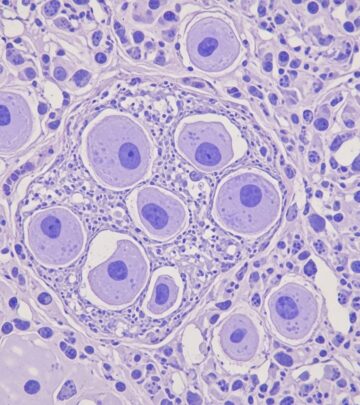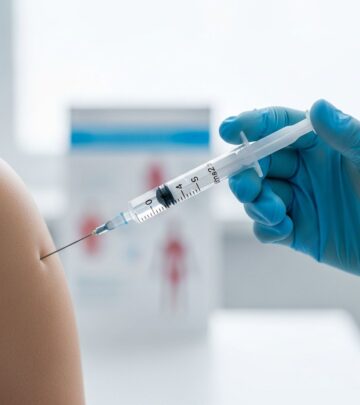Recognizing Early HIV Symptoms: What You Need to Know
Understand the first warning signs of HIV, why early detection matters, and how to take the right steps for your health and others'.

Human Immunodeficiency Virus (HIV) is a virus that attacks the immune system, gradually weakening the body’s ability to fight off infections and disease. Understanding the early symptoms of HIV is crucial for timely diagnosis, effective treatment, and reducing the risk of transmission to others. This article provides in-depth information on the initial signs and symptoms of HIV infection, the progression of the disease, when to seek advice, and why early detection through testing is so important.
Table of Contents
- What is HIV?
- Early HIV Symptoms
- Stages of HIV Infection
- When to See a Doctor
- The Importance of HIV Testing
- Frequently Asked Questions
What Is HIV?
HIV stands for Human Immunodeficiency Virus. The virus targets the immune system, specifically attacking CD4 cells (a type of white blood cell), which the body needs to fight infection. As HIV multiplies and destroys these cells, a person’s ability to ward off infections and certain cancers diminishes over time. Without treatment, HIV infection can lead to AIDS (acquired immunodeficiency syndrome), a life-threatening stage characterized by severe immune system damage and susceptibility to opportunistic infections and cancers.
Early HIV Symptoms
The first signs of HIV infection typically occur within 2 to 4 weeks after exposure, although many people may have no symptoms at all in the earliest phase. When present, these early HIV symptoms are often mistaken for a common viral infection like the flu.
Common Early HIV Symptoms
- Fever
- Chills
- Fatigue or Tiredness
- Swollen lymph nodes/glands
- Rash
- Sore throat
- Headache
- Muscle or joint pain
- Night sweats
- Mouth ulcers
These symptoms collectively are referred to as acute retroviral syndrome (ARS) or acute HIV infection. They represent the body’s initial, generalized immune response to the virus.
Symptom Characteristics
- Symptoms often appear within 2-4 weeks of exposure.
- They usually last a few days to a few weeks.
- In many cases, symptoms are mild and may go unnoticed.
- It is possible to be highly infectious during this period, even if symptoms are absent.
- Symptoms tend to subside on their own, but the individual still harbors the virus.
Key Point: Because early HIV symptoms are nonspecific and resemble those of other viral infections like influenza, many people may not realize they’re infected.
Table: Comparison of Early HIV Symptoms vs. Flu Symptoms
| Symptom | Early HIV Infection | Seasonal Influenza |
|---|---|---|
| Fever | Common | Common |
| Fatigue | Common | Common |
| Swollen lymph nodes | Common | Uncommon |
| Muscle aches | Possible | Common |
| Sore throat | Possible | Common |
| Rash | Possible | Uncommon |
| Night sweats | Possible | Uncommon |
| Mouth ulcers | Possible | Uncommon |
Why Early Symptoms Are Easy to Miss
- Non-specific: They are similar to symptoms of other more common viral infections.
- Temporary: Symptoms may fade quickly or be mistaken for a mild illness or allergy.
- Asymptomatic Cases: Many people show no symptoms at this critical early stage.
- Underdiagnosis: As a result, early infection often goes undiagnosed without an HIV test.
Stages of HIV Infection
The progression of HIV infection happens in several stages, each with its own set of symptoms and health risks. Early diagnosis and treatment can prevent or delay progression and help maintain a healthy life.
1. Acute HIV Infection (Primary Stage)
- Occurs 2-4 weeks after exposure to the virus.
- Symptoms: Flu-like symptoms, rash, night sweats, swollen lymph nodes, sore throat, headache, muscle/joint pain.
- High viral load (virus present in large amounts in blood), making transmission risk high during this stage.
- Symptoms may resolve spontaneously.
2. Clinical Latent Infection (Chronic HIV)
- The virus continues to multiply, but at lower levels.
- This stage can last years without symptoms in people not receiving treatment.
- Many remain asymptomatic but are still infectious.
- Regular testing and medical care are vital, as the virus is still damaging the immune system.
3. Symptomatic HIV Infection
- The virus has weakened the immune system, leading to more serious symptoms and complications.
- Possible symptoms:
- Prolonged fever
- Chronic diarrhea
- Significant unexplained weight loss
- Oral thrush (yeast infection in the mouth)
- Shingles (herpes zoster)
- Pneumonia
- Recurrent skin rashes, bumps, or sores
4. Progression to AIDS
- Occurs without treatment, typically 8 to 10 years after initial infection, but this can vary.
- AIDS is diagnosed when the immune system is severely damaged (very low CD4 cell counts) or the person develops one or more opportunistic infections or cancers specific to AIDS.
- Symptoms of AIDS may include:
- Persistent night sweats, chills, or fever
- Chronic diarrhea
- White spots or unusual lesions in the mouth or on the tongue
- Severe fatigue
- Rapid or unexplained weight loss
- Skin rashes or bumps
- Severe infections (such as pneumonia or tuberculosis)
- Neurological symptoms (memory loss, confusion)
When Should You See a Doctor?
If you think you may have been exposed to HIV or if you develop any symptoms listed above after a potential exposure (such as unprotected sex, sharing needles, or contact with blood), seek prompt medical evaluation. Early diagnosis and treatment are critical for long-term health and for reducing the risk of spreading HIV to others.
- Get tested: Don’t rely solely on symptoms. The only way to confirm infection is through an HIV test.
- Post-exposure prophylaxis (PEP): If you believe you may have been recently exposed to HIV, PEP can reduce risk if started within 72 hours. Speak with a medical provider immediately.
- Seek urgent care if you have concerning symptoms after a possible exposure.
The Importance of HIV Testing
The overlap between early HIV symptoms and other common viral illnesses means that testing is the only reliable way to diagnose an HIV infection. Many people living with HIV have no symptoms for years, making regular screening critically important, especially if you have risk factors.
- Testing methods include rapid tests, laboratory-based tests, and self-testing options.
- The window period is the time after exposure during which HIV may not be detected. It varies by test, typically from 10 days to 3 months.
- Repeat testing may be advised after recent high-risk exposure, even if the first result is negative.
- Early diagnosis allows for prompt initiation of antiretroviral therapy (ART), reducing the risk of health complications and transmission to others.
Recommended Routine Testing
- Everyone aged 13 to 64 should get tested at least once as part of routine healthcare.
- More frequent testing is recommended for those with ongoing high-risk behaviors or exposure.
Frequently Asked Questions (FAQs)
Q: How soon after exposure can early HIV symptoms appear?
A: Symptoms generally develop 2 to 4 weeks after exposure, but not everyone will have symptoms, and in some cases, may appear later or not at all.
Q: Can early HIV symptoms be confused with other illnesses?
A: Yes. The symptoms are often nonspecific and can easily be mistaken for the flu, mononucleosis, or other viral infections. This is why testing is critical if you may be at risk.
Q: If early HIV symptoms disappear, am I cured?
A: No. Even if symptoms resolve, HIV remains in the body and can progress to later stages if untreated. Early disappearance of symptoms does not mean the infection is gone.
Q: How infectious is someone during early HIV infection?
A: Someone in the acute stage of HIV infection is highly infectious due to very high viral loads in the blood and body fluids.
Q: What are the most reliable signs to look for?
A: No symptom is specific to HIV. Fever, rash, sore throat, and swollen lymph nodes in combination with recent exposure risk should prompt consideration of an HIV test.
Q: How is HIV infection diagnosed?
A: Only an HIV test can diagnose infection. There are rapid tests available, as well as blood tests that are performed in clinics and labs. A follow-up confirmatory test is typically done if an initial test is positive.
Q: Can HIV infection be prevented?
A: Yes. Prevention includes using condoms during sex, never sharing needles, regular testing for sexually active individuals, and pre-exposure prophylaxis (PrEP) for high-risk individuals.
Q: What should I do if I think I’ve been exposed to HIV?
A: Speak to a healthcare provider immediately. Post-exposure prophylaxis (PEP) can lower your risk but must begin within 72 hours of exposure.
Q: What is the outlook for people who start HIV treatment early?
A: With early treatment (antiretroviral therapy, ART), people living with HIV can maintain their health and live a near-normal lifespan, with greatly reduced risk of transmitting the virus to partners.
Takeaway Message
Recognizing the early symptoms of HIV is challenging due to their similarity with other common illnesses and the frequent absence of symptoms altogether. However, if you are at risk of exposure, don’t wait for symptoms to appear—request an HIV test as soon as possible. Early diagnosis and treatment are the best ways to protect your health and the health of others.
References
- Mayo Clinic, “HIV/AIDS – Symptoms and causes”
- Mosaic Life Care, “Early HIV symptoms: What are they?”
- Mayo Clinic, “Sexually transmitted disease (STD) symptoms”
- Mayo Clinic Care Network Health Information Library
References
- https://www.mymlc.com/health-information/faqs/e/early-hiv-symptoms-what-are-they/
- https://www.mayoclinic.org/diseases-conditions/sexually-transmitted-diseases-stds/in-depth/std-symptoms/art-20047081
- https://www.mayoclinic.org/diseases-conditions/hiv-aids/symptoms-causes/syc-20373524
- https://www.kuh.ku.edu.tr/mayo-clinic-care-network/mayo-clinic-health-information-library/diseases-conditions/hiv-aids
- https://www.amerikanhastanesi.org/mayo-clinic-care-network/mayo-clinic-health-information-library/faqs/early-hiv-symptoms-what-are-they
- https://www.kuh.ku.edu.tr/mayo-clinic-care-network/mayo-clinic-health-information-library/faqs/early-hiv-symptoms-what-are-they
- https://www.mayoclinic.org/diseases-conditions/hiv-aids/diagnosis-treatment/drc-20373531
- https://www.youtube.com/watch?v=K53pZzFcS9g
- https://www.amerikanhastanesi.org/mayo-clinic-care-network/mayo-clinic-health-information-library/diseases-conditions/hiv-aids
Read full bio of medha deb












